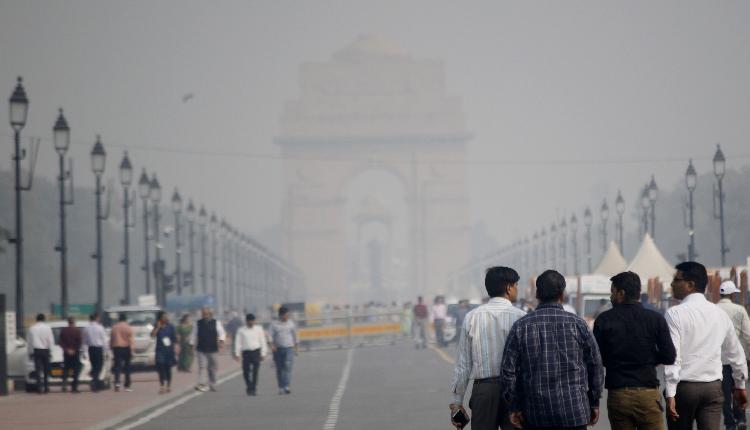Delhi's Toxic Air Crisis Intensifies: Supreme Court Orders NCR States to Comply with Emergency Measures

New Delhi: The national capital ground zero for toxic air quality continued its struggles on Monday morning, with the Central Pollution Control Board (CPCB) recording an alarming Air Quality Index (AQI) score of 410 at 6 a.m., falling in the "severe" category.
A dense layer of fog reduced visibility and plummeted the minimum temperature to a chilling 9.2 degrees Celsius at 5:30 a.m. according to the India Meteorological Department (IMD). A cloudy sky with light rain is expected later, bringing some respite from the pollution that has been plaguing the city.
Air quality indexes across key hotspots reached alarming levels, including Wazirpur (464), Ashok Vihar (460), Mundka (446), and Burari Crossing (445). Notably, Dwarka-Sector 8 (393) and Najafgarh (372) hovered perilously close to the "severe" threshold.
The Supreme Court recently directed Uttar Pradesh and Haryana to impose firecracker bans akin to Delhi's and urged stringent implementation of the Graded Response Action Plan (GRAP) Stage IV measures. The apex court also ordered monitoring compliance at Delhi's entry points, aiming to curb pollution.
However, experts argue that these emergency steps have yielded limited immediate results in curbing air pollution. PM2.5 levels remained hazardous last Sunday, with 37 out of 39 monitoring stations reporting "severe plus" air quality.
These toxic particles pose severe health risks, particularly for vulnerable groups such as the elderly and those with pre-existing respiratory conditions. As life for Delhi residents becomes increasingly challenging due to the combination of thick fog and toxic air, they are calling for stronger measures to combat this crisis.
"We will not rest until the city's air quality levels drop below acceptable limits," said a concerned citizen.
The impact of air pollution on health is well-documented, with symptoms including respiratory problems and eye irritation reported by residents. The need for effective solutions remains urgent as the capital continues its struggle against toxic air.
